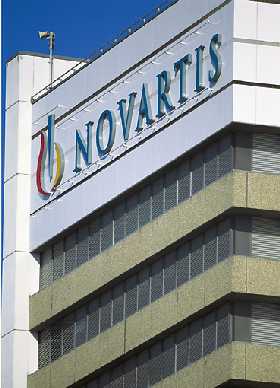The pharmaceutical industry is spending $68 billion per annum on research and development, but that isn’t stopping it from continuing to cling to Excel spreadsheets as the preferred planning tool for trials.
That’s according to a new survey from ClearTrial, a company that makes budgeting software for the life sciences industry. Of the survey’s 187 responses from pharma companies large and small, 57% reported using Microsoft Excel as the predominant method for clinical study forecasting and budgeting. Not surprisingly, then, only 21% of respondents said they were highly confident in their budget forecasts.
“The tools in the industry are pretty inadequate for the type of planning that is occurring; these trials are millions or tens of millions of dollars,” said Andy Grygiel, marketing manager for ClearTrial.
Half of the respondents reported an 11% difference between what they originally thought a trial would cost and what it actually ended up costing the company. And 20% said their cost variance was 16% or more.
When ClearTrial launched in 2004, said Grygiel, there was little interest among pharma companies in taking innovative measures to budget for trials. The money was flowing and no one was too worried about accurate budgeting, he said. But flash forward seven years to a post-recession world, and Grygiel says he thought he’d see something different. Unfortunately, he hasn’t. Pharma and device companies still hold fast to tools that clearly aren’t hitting the mark—for budgeting and forecasting or anything else.
Said Grygiel, beyond Excel spreadsheets, many in the industry are also fond of spawning their own software in-house to handle operations such as budgeting. Many others purchase an off-the-shelf program and try to tailor it to conform to the vagaries of clinical trials. Others look to benchmarking databases to help them figure out what a trial will cost, doing what Grygiel calls “what-if analysis.” None of these are working well.
Those who watch the industry say this is no shocker. “I’m not surprised; the clinical research drug industry has not been a leader in adopting new technology,” said Michael Martorelli, director at investment banking firm Fairmount Partners, consultant to the CRO industry, a long-time watcher of the space and an adjunct professor of finance at Drexel University.
Initially, he said, the pharmaceutical industry was so flush, there was no need to tinker with technology that might make it more efficient. Since all that has begun to change, though, adoption of technology has been slow due to a few confounding factors. Unlike other industries that have seen much earlier adoption of technology, drug developers are heavily regulated, and have to get much of what they’re doing approved by the FDA before it happens. This has made many drug companies less likely to move toward the full-scale operational change that would come with broad, sweeping new software systems, said Martorelli. In addition, he added, the drug development process involves so many players, each with their own software and/or operational processes that don’t necessarily communicate with each other—that it can be tempting for sponsors to just take the easy route, using Excel spreadsheets or their own home-grown systems.
“Another factor,” said Martorelli, “is the long-term nature of the industry’s projects. A trial might take 15 years from start to finish, and adopting new technology in the middle of it can present a daunting mess.” Many sponsors are using new technology for their new trials, but staying old-school (think Excel) for their older ones, thus creating a mishmash of operational styles even within one company, he said.
Another spreadsheet-driven gap that the survey unearthed lie in planning efficiency. Eighty three percent of respondents said that they required at least one to two weeks to create a ballpark budget for a clinical study, while half said they needed three weeks or more. And 62% of respondents reported requiring at least three weeks to roll up individual study budgets into a budget portfolio. This, said Grygiel, is largely a result of not having necessary documents and tools for research at one’s fingertips, but rather spread about in paper files.
The industry’s insistence on clinging to old ways when it comes to budgeting and forecasting puts it 10 to 15 years behind similar industries, said Grygiel. The pharma industry, in contrast, has been very conservative about change, especially when it comes to adopting new tools whose return on investment can take awhile to see, said Grygiel.
The tide may be turning, though, if very gradually. Grygiel said he’s seeing a slowly growing focus on better budget forecasting and thus an uptick in ClearTrial’s business.
“At one time there wasn’t the tight scrutiny on budgets that there is now, but now companies are looking at ways to become more efficient,” he said. “They’re looking closely at budgets, and the tolerance of variance in budgets has really come down.”
The survey, titled “Industry Survey: Clinical Study Budgeting Practices and Metrics,” garnered responses from managers and 187 executives in clinical operations, outsourcing, finance and project management from 75 pharma and medical device companies in the U.S., Europe and Japan. Grygiel said ClearTrial plans to do the survey every year to carefully track improvement—or the lack thereof.
Source: Center Watch





 Indian Pharmaceutical Congress (IPC)
Indian Pharmaceutical Congress (IPC) Federation of Indian Chamber of Commerce & Industry ( FICCI )
Federation of Indian Chamber of Commerce & Industry ( FICCI ) 















